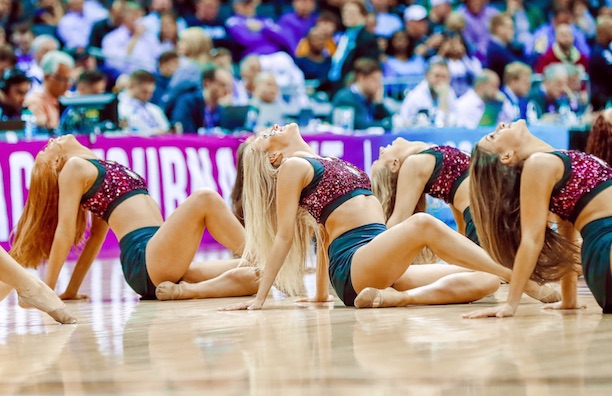Understanding The Calls, Reviews & The Refs

By Kevin Wilkerson, PubClub.com Sports Blogger
For those who have been in college basketball hibernation since your bracket was officially busted in last year’s March Madness, there have been a few new rules changes implemented in the game.
They are some quite significant ones, too, and here’s a rundown of them. This is to keep you from throwing your arms in the air, standing silent before asking others “what is happening!?,” as you’re standing in the bar watching your teams.
1.) The New 3-Point Line Distance
The 3-point line has been moved back to the international distance of 22 feet and 1 ¾ inches at the top of the key and 21′ 7 and 7/8” in the corners. It was previously 20 feet, 9 inches. You are likely to see the old line on the court in addition to the new one; that one is for the women’s game. Some venues may even have the NBA 3-point line painted onto the court (22 feet in the corners and 23.75 feet behind the top of the key).
2.) The Charging/Blocking Arc
The toughest call in college basketball for the zebras is the charging/blocking one. In order to make it “easier,” there is now an arc painted inside the paint. If a player’s feet are anywhere on that line, then it’s an automatic blocking foul.
3.) Replay Reviews
This one will drive you crazy. All close calls within two minutes remaining in the game are automatically reviewed. These reviews tend to last longer than the time remaining on the game clock. It’s a good time or order another drink at the bar or to go to the bathroom.
And While We’re Talking Rules, Flagrant-1 vs. Flagrant-2 Fouls
You’re going to see a few of these calls, too, all of which are also reviewed. Here’s what a Flagrant-1 vs. Flagrant-2 foul means:
A Flagrant-1 foul is what is deemed “unnecessary” contact meaning something more than a normal foul but less than something that deserves an ejection. If a player commits two Flagrant-1 fouls, then he is ejected.
A Flagrant-2 foul is severe and results in an immediate ejection.
Think of this as college basketball’s version of college football’s targeting.
Leave a Reply
You must be logged in to post a comment.